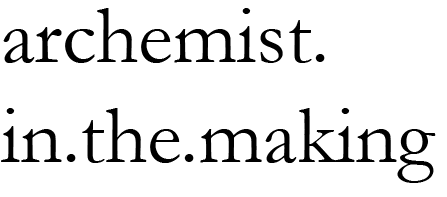Inspired by Despina Stratigakos’s ‘What I Learned from Architect Barbie’
It was a harmless joke really when I decided to look up the Architect Barbie until I came across Stratigakos’s column on Places Journal.
I thought I was going to be greeted by a couple of eBay listings, toy shop shouting their bargain prices at me. Among the 200 careers Barbie has had, I’d like to think that at least architecture is there. But instead, I got a series of debates before me, questioning whether Barbie’s portrayal of an architect was accurate. It is unsurprising to see her appearance being scrutinised given that Mattel (The company that owns Barbie) has garnered varying criticisms over the years. Having said, when the media’s portrayal of the architect has been exhausted and misleading, it is understandable that Barbie would be under the watchful eyes of many others.
The Architect Barbie was first proposed in 2002 when Mattel released a poll for the public to decide whether Barbie should be either an architect, librarian or a policewoman for next I can be… franchise. The Architect won the poll, however, the dreams were never realised as there were fears that children would be unable to comprehend the role of an architect.
“Mattel’s crushing announcement that the company would not produce the doll — in its view an architect’s work was beyond the comprehension of little girls”
- Stratigakos, 2011
It would take a couple of years before the occupation to be realised. However, the proposal of The Architect Barbie provided an opportunity for Stratigakos to generate a very political discussion about the possible future of the Architect Barbie. Given that there was an assumption that children cannot understand the role of an architect, it sparked an inspiration to educate how children would approach architecture, and workshops among female architects on what they believe the future Architect Barbie would look like.
When the second poll for I can be series was re-introduced in 2010, they targeted professions that were low in female to male ratios. Architecture, with 17% of women in the industry, was pitted against the surgeon and computer engineer Barbie. Computer Engineer Barbie won the votes. However, The Architect Barbie was brought back on board after Stratigakos and architect Kelly Hayes McAlonie were brought on board to design Barbie’s architect attire. It was only then that eyes started to needle down to the doll’s appearance.
The outcome of the eventual Architect Barbie attracted polarising comments, from arguing that her outfit should be mourning black and chunky workshoes for site visits to the unrealistic scale of the 2011 dream house model. It is laughable really when Architect’s comments are pinned to the appearance solely, and not be able to see past that this was a stepping stone to celebrating that Barbie is advocating for gender balance in the profession.
Although it can be argued that because we are rather proud of what we do, it wouldn’t be surprising that many would attack Barbie’s outfit. It may seem harmless, yet it is a reflection on how society (and our industry) views women in architecture. Must she always wear black? Just because she’s wearing a dress and carrying a helmet doesn’t mean that we can assume that it will be her official outfit for a site visit! These comments, initially said with humour can quickly become detrimental if spoken in a professional environment.
Perhaps those who were criticising Barbie forgot that she is a toy. Often, because of the age-gap between the adults, the doll and the children are rather extensive, we forget how to communicate the language of toys at the level of a baby, toddler, child and adolescent. Of course, a majority of the architects are accustomed to wearing black, yet when a child who is still developing their thinking, black doesn’t successfully trigger much imagination, nor is attractive to a child in comparison to bright colours. The Architect Barbie may not be wearing chunky steel-capped shoes, yet a lot of children have other Barbie shoes that they’d like to change up, and it just happens so that most of them are pairs of heels. Like other career Barbies, none of them is genuinely accurate in representation, and most go by iconic tools-of-the-trade for a natural association. So it happens that blue-prints and a pink drawing tube were selected for the architect (as they do in film and television).
The Architect Barbie itself was a social experiment, but it opened up questions on the extent of how much it indeed influenced our career choices. Not much I’d like to think, however, for Mattel’s statement about us unable to comprehend the career of an architect is undeniably wrong. We, as children, have always been sensitive to space subconsciously. We’ve built dollhouses, rearrange lego pieces, pretend that the floor is lava and so on. How we have created our playspaces is architectural enough, only if someone is willing to explain that concept to us earlier on.
So while I’m browsing through eBay and dropping jaws at the three-figure sum of the ‘Architect Barbie’, I am reminded that I already have several architect Barbies. One has a mermaid tail, one has a pink dress for a masquerade ball, and one has hair that glows in the dark. They all have been architects in some ways, building castles and bridges with Ken and Kellys. Sure, they don’t fit the modern conventions of what the architects should be, but this is my world of Barbies - and as long as they are good people then they can be whoever they want to be.
And that’s fine by me.
Related work: Archemist Podcast Episode Four// Did Lego Inspire Your Architecture Career?
References:
Despina Stratigakos, “What I Learned from Architect Barbie,” Places Journal, June 2011. Accessed 13 Jan 2020. https://doi.org/10.22269/110613
Karen Cilento, “Architect Barbie / A Social Experiment,” ArchDaily, 15 August 2012. Accessed 13 Jan 2020. https://www.archdaily.com/263765/architect-barbie-a-social-experiment


